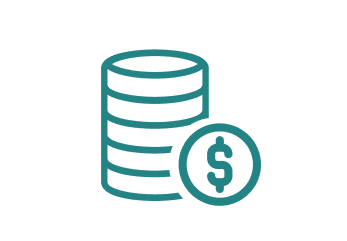A profit and loss (P&L) statement, also known as an income statement, is a financial statement that summarizes a company’s revenue, costs and expenses. P&L analysis is essential to interpreting cost efficiency, spending trends and emerging issues impacting your company’s bottom line. It can also give potential investors important information about the sustainability of your business. By becoming fluent in P&L analysis, both finance leaders and operations personnel can make better, informed decisions.
A Profit & Loss Statement Is Your Key to Financial Health
A profit and loss (P&L) statement is a simple yet indispensable tool that captures the core financial activities of your business over a set period. Often referred to as an income statement or statement of earnings, most businesses run these reports monthly, quarterly or annually.
A P&L analysis offers insight into the profitability of your business by comparing money coming into your business (revenue) with the cash going out (expenses). Any revenue left after covering expenses is profit, but you’re operating at a loss if expenses outpace revenue.
Monitoring trends in these numbers allows you to assess your company’s financial health and growth trajectory, diagnose financial problem areas and capitalize on new opportunities without overextending your budget.
The Key Components of a P&L Statement
The specific format of a P&L statement reflects a company’s business model, industry requirements, accounting practices and specific strategies, among many other factors. However, there are several core components of any P&L statement:
- Revenue: The starting point of any P&L statement, revenue is the total income generated from sales of goods and services.
- Cost of Goods Sold (COGS): These are the direct costs of producing your company’s goods or services, including direct materials and labor.
- Gross Profit: Calculated as revenue minus COGS, this figure reflects the profitability of your core business activities before accounting for operating expenses.
- Operating Expenses: Also known as overhead, operating expenses include expenses not directly tied to producing goods or services, such as rent, utilities, and staff salaries.
- Earnings Before Interest, Taxes, Depreciation, and Amortization (EBITDA): Evaluates a company’s operational profitability without having to factor in financial decisions, accounting decisions or tax environments.
- Net Operating Income: Also known as your “bottom line,” your net operating income is what remains after factoring in all operating expenses.
These different components, together, will give you a fuller picture of the impacts on your bottom line.
How to Read a P&L Statement: Tips for Gathering Strategic Insights
Your P&L statement isn’t just a collection of line items; it’s the story of your company’s financial well-being. The tips below can sharpen your skills in conducting a P&L analysis, enabling you to spot underlying trends crucial for strategic decision making.
- Look for trends: Look for trends across multiple accounting periods. Analyze how revenue, expenses, costs and overall profits have changed over time. This can help identify patterns, seasonal variations or red flags that need further investigation.
- Justify expenses: Scrutinize all expenses to ensure they’re necessary and aligned with business goals.
- Compare with budgets and forecasts: Compare the actual results with the budgeted or forecasted figures. This variance analysis can reveal areas where the business is underperforming or over-performing against its plans.
- Analyze non-operating items: Pay attention to non-operating income and expenses, as these can significantly impact the net income but are not related to the core business operations.
- Assess revenue quality: Recurring revenue is often more valuable than one-time sales, and a growing percentage of recurring revenue can be a positive indicator of business stability.
- Use financial ratios: Your gross and operating margin ratios are vital for benchmarking your performance against industry standards. They’ll also reveal how much profit you make from each dollar of sales after accounting for COGS and operating expenses, respectively.
- Evaluate debt and interest expenses: High-interest expenses could indicate that the business is over-leveraged.
- Personalize your analysis and take action: Focus your analysis on business-critical operations and growth opportunities, then use those insights to identify areas where you can reduce costs, optimize pricing or reinvest profits.
There’s plenty more that your income statement can tell you, from impacts on cash flow to opportunities for tax planning. Identifying and applying these insights with the help of an accounting or finance professional can help you make data-driven decisions about your business strategies and operations, including potential opportunities for expansion or innovation within your industry.
Turning Your P&L Analysis Into Action
Routinely completing a P&L statement and mastering basic P&L analysis techniques enables you to ask—and answer—more complex questions about your business. You’ll unlock more nuanced insights into:
- Cost-saving opportunities: Cutting costs doesn’t always mean compromising the quality of your products or services. Your analysis may reveal an opportunity to renegotiate supplier contracts, optimize operational processes or discontinue less profitable offerings.
- Advanced revenue strategies: Understanding which products or services are most profitable during which times of the year allows you to adjust marketing strategies or reallocate resources to maximize revenue streams.
- Forecasting and budgeting: A detailed view of your revenue history enables better forecasting and budgeting, helping you plan for future investments and allocate resources where they’ll have the most significant impact.
- Scenario analysis: P&L insights allow you to better anticipate the potential impact of various business decisions, like expanding into a new market, launching a new product line or changing your pricing strategy.
- Business goal alignment: Whether you’re aiming for rapid growth, increased market share or higher profit margins, your P&L analysis can help ensure that your financial strategies align with overall business goals.
As a small business owner, there is often little room for error. Intuition alone is not enough: a routine P&L analysis provides the hard data you need for informed decision making. By integrating these insights into your strategic planning, you’ll put your business on a path to sustained profitability and success while appropriately managing risks.
Streamline P&L Creation With Technology
You don’t need to invest in costly systems to streamline your P&L statement creation. When choosing a tool, consider the specific needs of your business, your transaction volume and the complexity of your financial data. Specialized accounting software like QuickBooks and FreshBooks also offer robust P&L analysis features, while tools like PlanGuru can help with forecasting and budgeting.
Build and Analyze Detailed Financial Statements for Your Small Business
You have the foundational knowledge to create, comprehend and actively engage with your P&L statements. Do you need extra guidance or expertise to ease the process? Connect with fractional finance experts today from Paro. We’ll match you with a vetted expert who can provide support with financial reporting, so you can drive greater profitability at your business.







